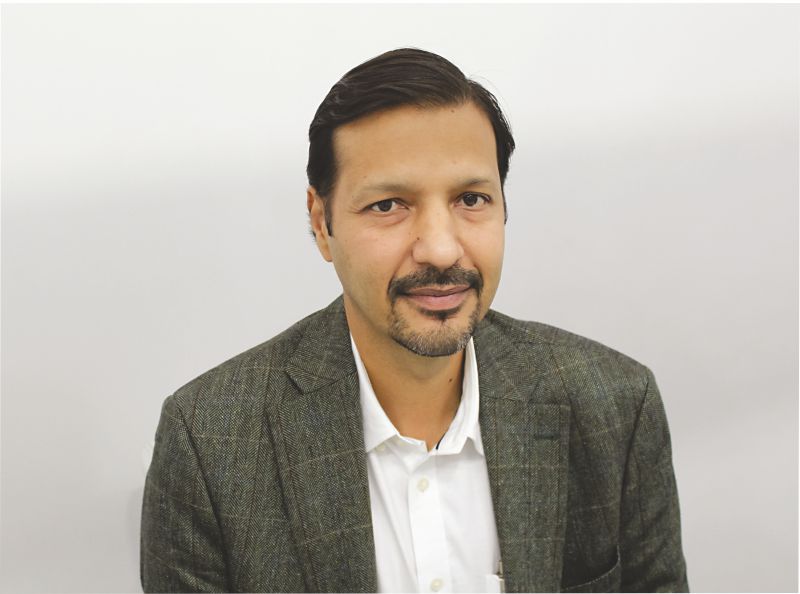Kuantum Papers with its slew of specialty paper launches in recent times has complemented its existing wide range of mass market products to give the market substantial product choices from a single producer.

Punjab-based Kuantum Papers is producing paper out of agro-residues since the year 1979 and has since become a mill to churn out one of the widest product range possible comprising products both for mass consumption and specialty demand. The product profile includes maplitho, colored paper, ledger, cartridge, parchment, duplicating paper and wood free specialty papers.
Mr. Pavan Khaitan, Managing Director, Kuantum Papers Ltd. recently talked to Paper Mart to inform that specialty paper segment is the present focus of the company, which has launched few products in this range recently. Mr. Khaitan also expressed his views on environment compliances, product quality to beat competition, the issue of import with its pros and cons, etc. Excerpts:
Paper Mart: To start with, tell us something about the developments at Kuantum Papers.
Pavan Khaitan: We have reorganized ourselves with an aim to fill up the high value-added space available in the paper market. The company has launched products like Kuantum bond, colored copier, and a high bright paper from agro pulp which has met with a lot of success. We are also in the process of launching a 100 percent tree-free copier paper which means there will be no use of wood pulp at all in the manufacturing process. We are growing organically to develop high value-added paper products. That is where our focus is on.
PM: Any recent changes in the technology in order to meet the capacity demand or any plan for the future capacity expansion?
PK: Fortunately, there is a lot of scope for technology advancement in the paper industry. One has to actually choose the technology judiciously. This is what we are doing at Kuantum Papers. We have taken a lot of help of the technology advancement in terms of improving our quality, which is giving us the rightful benefits in the market segments. In the future as well, we are budgeting our spending towards strengthening the pulp mill. This is because the paper mill is the core and heart of papermaking, and making the papermaking process stronger helps improve the quality of the pulp as well as paper.
PM: As generally seen, the technology investments by the paper mills are on two fronts, viz. production and environment. I would like to know what Kuantum is doing on these fronts.
PK: As I said, we will soon invest in our new pulp mill which will help us improve the quality of the pulp and further improve the quality of the paper. Simultaneously, we are going to invest in our generation plant of chlorine dioxide, which will help us meet the environmental norms. Furthermore, the best available technologies have always been considered for use by us, to keep our environment footprint positive. We are also looking at cost reduction techniques and methodologies which will help us economize on the operational cost and put us in a better spot. As a result of all this, there will be an increase in the productivity. We are hoping to reach 20-25 percent improvement in our productivity. However, the focus is not really the capacity expansion. Instead, the focus is on improvement and efficiency promotion in the existing capacity.
PM: Since the paper industry has become quite active on environment, how does Kuantum responds to these environmental parameters set by various norms and regulations?
PK: We have to take care of the environment and ensure that the footprint that we leave because of our operations is not going to come as disadvantageous to the future generations. To ensure such kind of sustainable business pattern, we have to act now. The rest of the world is much more advanced in terms of achieving such goals. If we have to take steps toward reaching the world standard, we have to take faster steps in order to effectively reach those goals. Moreover, Kuantum Papers is in conformity with what the new requirements of specifications are and in most of these specifications, we are already achieving these parameters at par with the industry-wide scale. The industry has taken up the challenge because everybody does feel for the environment and it’s the step in the right direction. We are in the direction of progress towards not only achieving the standards but bettering them as well.
PM: On the environment side itself there are two major focus areas; one is the effluent generation and the other is the conservation of power and water. Will you please tell me the plans of Kuantum with regards to both?
PK: Work on effluents and other conservation approaches are a constant exercise, and a constant change happens here at Kuantum. Today, the kind of water consumption level we are achieving is close to about 60 cubic meters per tonne of paper. I think the new guidelines are suggesting that we should be at 50 cubic meters or below. So, we are heading towards that and we have drawn up sufficient plans to look up how we are going to target that mark. That is where in fact the technology does help. Investing in the right technology helps reducing the water consumption, but investing in them and selecting the right one are the main issues. The process is already on, and I am sure we are going to achieve that mark in the near future. As far as effluent treatment is concerned, we are using amongst the best technologies that are available. We are in sync with the norms that are set out by both PPCB and CPCB.
PM: Coming on the market side, how has the year 2017 for Kuantum Papers?
PK: Well, we have bettered our record of the last year. We are on a good footing and largely it is because we are completely market-oriented. Most of our production goes for market servicing and we have amongst the largest product portfolio that is available with anyone in the industry. This keeps us re-energized to sell in a broad landscape of the market. Even though there have been challenges because of GST or imports happening, we have overcome that. It did not really affect Kuantum. The market prices have stabilized now and we are looking at incremental return coming from the market soon enough in the next quarter or so.
PM: We have been complaining about the imports, but imports are happening only to bridge the gap between the total production and demand which is arising in India.
PK: I would say it’s a double-edged solution. The situation created by imports therefore does affect us price wise but also shapes us accordingly to adequately respond to the new situations by upping our quality and quantity. From the production side, we are constrained by the raw material availability. We do not have enough resources available at our disposal in terms of raw material availability. Moreover, the steps in increasing the capacity will be very gradual because we have largely optimized for whatever is available. Unless a large piece of land is available or made available to the industry, which the industry has been seeking from a long time to create a good amount of wood resource, any kind of large capacity enhancements is not likely to come in.
Further, even though the gap is filled by imports, it is sometimes more than the requirement. That is what ends up denting the pricing structure. For instance, the copier segment has been hit very hard. A large volume of copier has come in and obviously found its way into the market. Though, I don’t deny the customers are getting the good quality paper at reasonable prices. On the flip side, that’s what helps us to step up our quality and face the challenge.
PM: Coming to the market strategy, through what kind of product and services Kuantum is gearing to position itself well in the future?
PK: The way our operation is configured, it allows us to produce both mass-market products, like maplitho and cream wove, and specialty products. We in the last one or two years have focused on specialty papers. Kuantum now has an extremely wide range of specialty papers and that is one of our focus areas for now. We are budgeting and planning to optimize on this segment. To give you an example, we have launched colored copier, bond paper, and stiffener paper (which is used widely in the soap industry for soap wrapping) along with other specialty papers like parchment, cartridge, and ledger. Moreover, we are in the process of launching 100 percent tree-free copier paper. These are our focused product portfolios, which we plan to expand further. I am sure this will give us a much-diversified portfolio and help us reach differential markets.
PM: What is the growth outlook for the specialty paper segment?
PK: The fact is it’s a small or low volume market. That is why probably it is a deterrent for larger or other players to put their mind to. But we are focusing on that because we see a lot of value addition, which is coming from the fact that we are market-oriented and have better feel of the market. We are able to identify the market demands even for low volume requirements, and we are there to service those low volumes but high-value product requirements. And, it is making a lot of economic and business sense to do so.
PM: Your views on the performance of the pulp and paper industry in coming times segment wise.
PK: I would say that we are on a very strong footing. We are likely to see strong growth and demand with a rightful focus on the education sector which is going to have the desired effect in terms of more educational institutions opening up. From there, the demand for paper is bound to come in coupled with economy showing signs of consistent rising for the next of 4-7 years. As the economy grows, the demand for paper is natural. As an industry, we have to manage our resources and costs well in order to make price-effective, right-quality products because we can easily face the competition from imports. If we play our cards well, we would have a bright future ahead.
Out of all the segments, I feel newsprint is the only segment where the challenge is the most because there are options and alternatives available with the younger generation switching their requirement to electronic media. Their requirements for reading the information from the newspaper are far lesser than the elderly generation. I guess the focus on the newsprint is going to go down but requirements for writing-printing paper and packaging papers like krafts and packaging boards are going to go up because of economy growing. Even the specialty paper segment has the potential to grow because of the niches. Even the copier segment has been showing an effective trend in terms of highest percentage growth of 12-15 percent in the past few years and has gained on volumes. Now even if we lower it to 8-10 percent, it would still be the largest volume to play around with.



